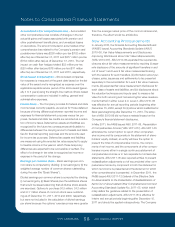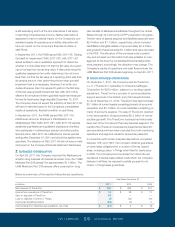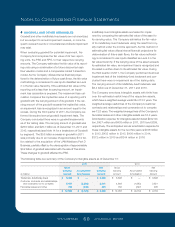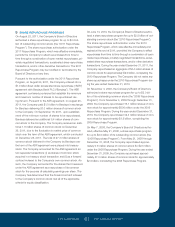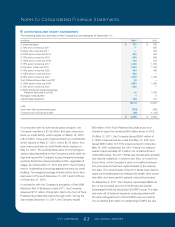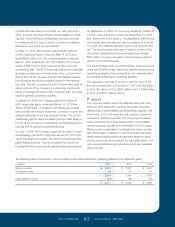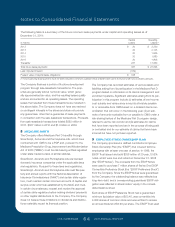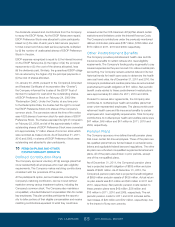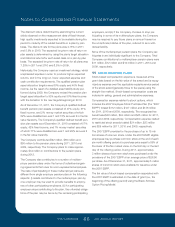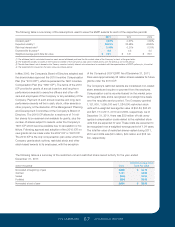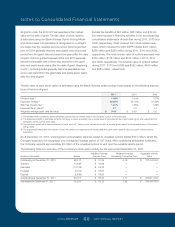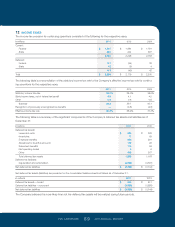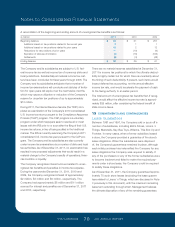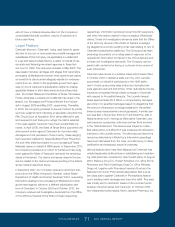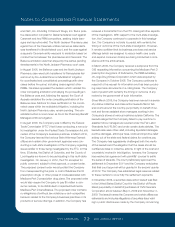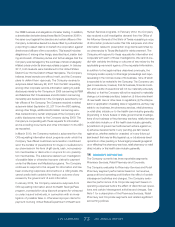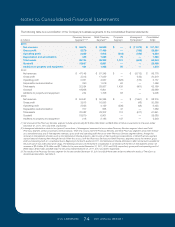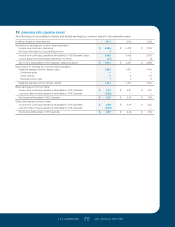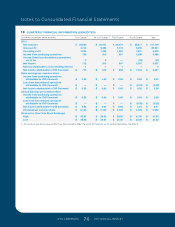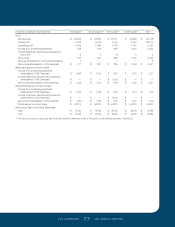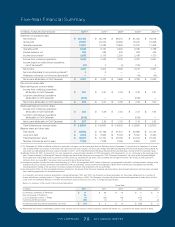CVS 2011 Annual Report Download - page 70
Download and view the complete annual report
Please find page 70 of the 2011 CVS annual report below. You can navigate through the pages in the report by either clicking on the pages listed below, or by using the keyword search tool below to find specific information within the annual report.
Notes to Consolidated Financial Statements
CVS CAREMARK 68 2011 ANNUAL REPORT
The fair value of each stock option is estimated using the Black-Scholes option pricing model based on the following assump-
tions at the time of grant:
2011 2010 2009
Dividend yield (1) 1.43% 1.00% 1.07%
Expected volatility (2) 32.62% 33.15% 31.34%
Risk-free interest rate (3) 1.81% 1.85% 1.65%
Expected life (in years) (4) 4.7 4.3 4.3
Weighted-average grant date fair value $ 9.19 $ 9.49 $ 7.20
(1) The dividend yield is based on annual dividends paid and the fair market value of the Company’s stock at the grant date.
(2) The expected volatility is estimated using the Company’s historical volatility over a period equal to the expected life of each option grant after adjustments for
infrequent events such as stock splits.
(3) The risk-free interest rate is selected based on yields from U.S. Treasury zero-coupon issues with a remaining term equal to the expected term of the options
being valued.
(4) The expected life represents the number of years the options are expected to be outstanding from grant date based on historical option holder exercise
experience.
As of December 31, 2011, unrecognized compensation expense related to unvested options totaled $174 million, which the
Company expects to be recognized over a weighted-average period of 1.97 years. After considering anticipated forfeitures,
the Company expects approximately 26 million of the unvested options to vest over the requisite service period.
The following table is a summary of the Company’s stock option activity for the year ended December 31, 2011:
Weighted Average Weighted Average Aggregate Intrinsic
shares in thousands Shares Exercise Price Remaining Contractual Term Value
Outstanding at December 31, 2010 66,017 $ 31.39 4.16 $ 313,163,000
Granted 13,466 $ 34.88 — —
Exercised (14,738) $ 25.32 — —
Forfeited (3,152) $ 33.47 — —
Expired (2,486) $ 35.59 — —
Outstanding at December 31, 2011 59,107 $ 33.40 4.11 $ 439,671,000
Exercisable at December 31, 2011 32,202 $ 33.13 2.88 $ 249,947,000
Excess tax benefits of $21 million, $28 million and $19 mil-
lion were included in financing activities in the accompanying
consolidated statements of cash flow during 2011, 2010 and
2009, respectively. Cash received from stock options exer-
cised, which includes the 2007 ESPP, totaled $431 million,
$285 million and $250 million during 2011, 2010 and 2009,
respectively. The total intrinsic value of options exercised was
$161 million, $118 million and $104 million in 2011, 2010
and 2009, respectively. The total fair value of options vested
during 2011, 2010 and 2009 was $452 million, $445 million
and $383 million, respectively.
All grants under the 2010 ICP are awarded at fair market
value on the date of grant. The fair value of stock options
is estimated using the Black-Scholes Option Pricing Model
and stock-based compensation is recognized on a straight-
line basis over the requisite service period. Options granted
prior to 2004 generally become exercisable over a four-year
period from the grant date and expire ten years after the date
of grant. Options granted between 2004 and 2010 generally
become exercisable over a three-year period from the grant
date and expire seven years after the date of grant. Beginning
in 2011, options granted generally become exercisable over
a four-year period from the grant date and expire seven years
after the date of grant.
127087_Financial.indd 68 3/9/12 9:42 PM


